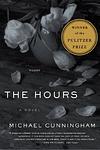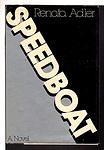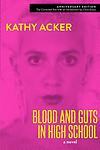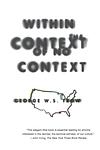The Greatest "Postmodern, New York" Books of All Time
Click to learn how this list is calculated.
This list represents a comprehensive and trusted collection of the greatest books. Developed through a specialized algorithm, it brings together 300 'best of' book lists to form a definitive guide to the world's most acclaimed books. For those interested in how these books are chosen, additional details can be found on the rankings page.
Genres
Postmodernism is a literary movement that emerged in the mid-20th century, characterized by a rejection of traditional narrative structures and a focus on self-reflexivity and intertextuality. Postmodern literature often features fragmented narratives, unreliable narrators, and a blurring of the lines between reality and fiction. It is a genre that challenges the notion of a single, objective truth and instead embraces the idea of multiple perspectives and interpretations. Postmodern literature is often seen as a response to the modernist movement that preceded it, and it continues to be a popular and influential category for contemporary writers.
The "New York" category of books typically refers to literature that is set in or explores the city of New York. These books may focus on the city's history, culture, and landmarks, or they may delve into the lives of its diverse inhabitants. From gritty crime novels to romantic comedies, the "New York" category encompasses a wide range of genres and styles, all united by their connection to one of the world's most iconic cities. Whether you're a native New Yorker or a curious outsider, these books offer a unique glimpse into the heart of the Big Apple.
Countries
Date Range
Reading Statistics
Click the button below to see how many of these books you've read!
Download
If you're interested in downloading this list as a CSV file for use in a spreadsheet application, you can easily do so by clicking the button below. Please note that to ensure a manageable file size and faster download, the CSV will include details for only the first 500 books.
Download-
1. Herzog by Saul Bellow
The novel centers around Moses Herzog, a middle-aged, intelligent yet distressed man who is going through a mid-life crisis. After his second marriage fails, he falls into a state of emotional turmoil and begins writing letters to friends, family, and even famous figures, expressing his philosophical thoughts and personal feelings. His journey of self-discovery and understanding forms the crux of the story. It's a profound exploration of a man's struggle with the complexities of life and his quest for meaning.
-
2. The Amazing Adventures of Kavalier and Clay by Michael Chabon
The book follows the lives of two Jewish cousins, one a skilled escape artist and the other a talented artist, before, during, and after World War II. They create a popular comic book superhero, which brings them fame and fortune. However, their success is complicated by personal struggles, including the escape artist's attempts to rescue his family from Nazi-occupied Prague and the artist's struggle with his sexuality. The narrative explores themes of escapism, identity, and the golden age of comic books.
-
3. Money by Martin Amis
"Money" is a darkly humorous novel that follows the life of John Self, a hedonistic, self-destructive director of commercials, as he navigates the excesses and depravities of 1980s New York and London. His life is filled with overindulgence in food, alcohol, drugs, and women, leading to a downward spiral of self-destruction. The novel is a satire on the excesses of capitalism and the obsession with wealth and materialism, and it also explores themes of identity, self-loathing, and the destructive power of addiction.
-
4. Underworld by Don DeLillo
"Underworld" is a sweeping narrative that spans from the 1950s to the end of the 20th century, exploring the interconnectedness of events and the impact of the Cold War on American society. The story revolves around a diverse group of characters, including a waste management executive, a graffiti artist, a nun, and a baseball collector, among others. These characters' lives intertwine in unexpected ways, illustrating the complex web of relationships and influences that shape our world. The novel is renowned for its vivid portrayal of historical events and its profound examination of themes such as memory, technology, and waste.
-
5. A Visit From The Goon Squad by Jennifer Egan
"A Visit from the Goon Squad" is an interconnected collection of stories about a group of characters whose lives intersect in the music industry. The narrative spans several decades, tracing the characters' journey from their youth to middle age. It explores themes of time, change, and the impact of technology on human relationships and the music industry. The novel is known for its experimental structure, including a chapter written as a PowerPoint presentation.
-
6. The Recognitions by William Gaddis
The novel is a complex and lengthy examination of authenticity and forgery. It tells the story of a young man who becomes a master forger of Old Masters paintings, while exploring themes of identity, religion, and art. As the plot unfolds, the protagonist grapples with his own authenticity in a world obsessed with appearances and material success. The narrative is interspersed with philosophical and religious discussions, making it a challenging yet thought-provoking read.
-
7. The New York Trilogy by Paul Auster
"The New York Trilogy" is a collection of three detective stories that explore the nature of identity and the search for meaning. The stories are set in New York City and feature various characters, including a detective, a writer, and a professor, who are all engaged in their own personal quests. These quests often involve elements of mystery, existentialism, and introspection, and the stories are interconnected in various ways, creating a complex and thought-provoking narrative.
-
8. The Hours by Michael Cunningham
The novel is a reimagining of Virginia Woolf's "Mrs. Dalloway" and follows three women from different time periods, each of whom are profoundly affected by Woolf's work. The narrative alternates between Virginia Woolf as she writes "Mrs. Dalloway" in 1923, a 1950s housewife who is reading the novel, and a contemporary woman who is essentially living the life of the titular character. These three storylines eventually converge in a powerful exploration of mental illness, sexuality, and the transcendent power of literature.
-
9. Speedboat by Renata Adler
This novel follows a young woman reporter in New York City during the 1970s, as she navigates her professional and personal life. The book is written in a non-linear style, consisting of a series of vignettes, observations, and reflections, rather than a traditional narrative. The protagonist's experiences and thoughts on subjects such as race, politics, and the media form the core of the book, providing a snapshot of the social and cultural landscape of the time.
-
10. Blood and Guts in High School by Kathy Acker
"Blood and Guts in High School" is a postmodern feminist novel that follows the life of a young girl named Janey Smith, who embarks on a journey of self-discovery after being sexually exploited by her father. The narrative, fragmented and nonlinear, explores themes of sexual liberation, identity, and rebellion against societal norms. The protagonist's experiences are depicted through various forms of writing such as dream sequences, drawings, and plagiarized texts, blurring the line between reality and fiction.
-
11. JR by William Gaddis
The novel is a satirical critique of capitalism, narrating the story of an 11-year-old boy who builds a vast financial empire from his school's payphone. Using the adults around him as pawns, he manipulates the system to his own advantage, turning junk bonds into high profits. The narrative unfolds almost entirely through dialogue, making it a challenging but rewarding read. The book is a commentary on the American dream, exploring themes of greed, exploitation, and the dehumanizing effects of capitalism.
-
12. Sleepless Nights by Elizabeth Hardwick
"Sleepless Nights" is a novel that weaves together memories, reflections, and fictionalized episodes to paint a portrait of a woman's life. The narrative is fragmented and non-linear, reflecting the protagonist's introspective journey through her past relationships, experiences, and observations. Set against the backdrop of various American and European backdrops, the book delves into themes of love, loss, identity, and the complexities of the human condition. The protagonist's musings are interlaced with vivid character sketches of the people who have drifted in and out of her life, creating a tapestry of poignant and evocative vignettes that capture the essence of her restless, contemplative existence.
-
13. The Last Gentleman by Walker Percy
"The Last Gentleman" is a novel about a disoriented and confused man from the South who suffers from a "nervous condition" that causes him to forget who he is. When he meets a young man dying from a brain tumor, he decides to leave his home in New York and travel with the man and his family back to the South. Throughout his journey, he attempts to discover his own identity and grapples with existential questions about life, love, and death.
-
14. Moon Palace by Paul Auster
"Moon Palace" tells the story of Marco Stanley Fogg, an orphaned young man in New York City who embarks on a journey of self-discovery. As he ventures into the American West and delves into his family's past, he encounters a series of adventures and misadventures that challenge his understanding of identity, love, and the very nature of reality. The novel is a complex and symbolic exploration of American mythology, weaving together themes of solitude, survival, and the pursuit of the American Dream.
-
15. Wittgenstein's Mistress by David Markson
The novel is a stream-of-consciousness narrative from the perspective of a woman who believes she is the last human on earth. She shares her thoughts, memories, and experiences in a non-linear and often confusing manner. The narrative is filled with cultural and historical references, creating a haunting and profound exploration of loneliness, memory, and the human condition.
-
16. Mao II by Don DeLillo
"Mao II" is a novel that explores the life of a reclusive novelist who hasn't been seen in public for many years. The protagonist is drawn out of his seclusion when he becomes involved in an international crisis involving a hostage situation in Beirut. The book delves into themes of terrorism, mass culture, and the power of the written word, while examining the relationship between the individual artist and the collective society.
-
17. The Ghost Writer by Philip Roth
"The Ghost Writer" explores the life of Nathan Zuckerman, a young and ambitious writer who spends a night at the secluded New England home of his literary idol, E.I. Lonoff. Throughout his stay, Nathan grapples with his own aspirations, his Jewish identity, and his familial obligations, while becoming intrigued by Amy Bellette, a mysterious young woman who may have a profound connection to Lonoff. The novel delves into themes of artistic integrity, the burdens of literary influence, and the complex relationships between personal life and literary creativity.
-
18. Take It Or Leave It by Raymond Federman
"Take It Or Leave It" is a unique narrative that blends fiction and autobiography. The story is about a French-American man who is drafted into the U.S. Army during the Korean War. The narrative is non-linear and fragmented, often digressing into side stories and anecdotes. The protagonist shares his experiences of growing up in France during World War II, his immigration to the United States, and his experiences in the army. The book plays with the conventions of storytelling and is known for its postmodern style.
-
19. A Frolic of His Own by William Gaddis
The novel explores the complex and often absurd world of American law and litigation. The protagonist is a retired law professor who is embroiled in multiple lawsuits, including one against himself. The narrative is filled with legal documents, depositions, and court transcripts, which serve to critique the convoluted and often nonsensical nature of the legal system. The book also satirizes the American obsession with wealth and property, and the lengths people will go to protect their own interests.
-
20. Project For A Revolution In New York by Alain Robbe-Grillet
The book in question is a complex and fragmented narrative that delves into the chaotic and surreal environment of a post-revolutionary New York City. Through a series of disjointed scenes and characters, the novel explores themes of violence, sexuality, and political upheaval. The narrative structure defies conventional storytelling, with an elusive plot that challenges the reader's perception of reality. The work is emblematic of the author's involvement with the Nouveau Roman movement, which sought to revolutionize literary form and content by breaking away from traditional narrative techniques.
-
21. Something Happened by Joseph Heller
In "Something Happened," the narrative delves into the mind of Bob Slocum, a successful yet disillusioned corporate executive navigating the complexities of his personal and professional life in post-war America. The novel, characterized by its stream-of-consciousness style, explores themes of anxiety, isolation, and the mundane horrors of everyday existence as Slocum grapples with his relationships with his family, his colleagues, and himself. Through a series of introspective and often disjointed reflections, the protagonist reveals his deep-seated fears and desires, painting a stark and unsettling portrait of a man overwhelmed by the banalities and moral ambiguities of American middle-class life.
-
22. Within The Context Of No Context by George W. S. Trow
"Within the Context of No Context" is a critical examination of the impact of television and mass media on American culture and individual identity. The book presents a poignant analysis of how media reshapes human experiences and societal norms, creating a "context of no context" where traditional frameworks for understanding the world are eroded. The author argues that the overwhelming presence of media leads to a superficiality that disconnects people from authentic human interactions and historical continuity, ultimately altering perceptions of reality and diminishing the depth of personal and collective narratives.
-
23. Call Me Zebra by Azareen Van der Vliet Oloomi
"Call Me Zebra" is a novel about a young woman, who is the last in a line of self-proclaimed "anarchists, atheists, and autodidacts," embarking on a grand intellectual journey. After her father's death, she retraces the path they took as refugees from Iran to New York, immersing herself in literature and philosophy to cope with her grief. The protagonist's eccentric perspective and her passionate, often humorous, engagement with the works of literature make for a unique exploration of exile, art, and identity.
Reading Statistics
Click the button below to see how many of these books you've read!
Download
If you're interested in downloading this list as a CSV file for use in a spreadsheet application, you can easily do so by clicking the button below. Please note that to ensure a manageable file size and faster download, the CSV will include details for only the first 500 books.
Download





















